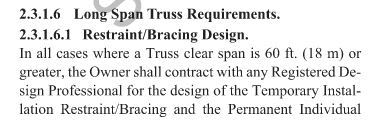dianium500
Structural
I have recently been seeing notes on truss manufacturer drawings that indicate the temporary truss bracing is the responsibility of the building designer. I have always specified the permanent truss bracing but never the temporary. This would seem to fall under means and methods. Anyone else encountering this?

